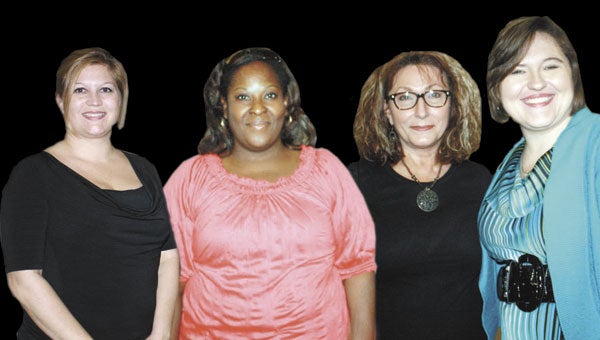Recovery groups raise awareness
Published 12:03 am Tuesday, September 25, 2012
Nearly everyone knows someone who has been impacted by substance abuse or mental health disorders, and that’s why local officials have been working to promote recovery this month.
South Central Alabama Mental Health, Crossover Ministries and the drug court gathered together for the first-ever recovery reception Monday at PowerSouth to profile the different services offered throughout the county.
“We want to bring recovery to those who need it,” said Diane Baugher, executive director of SCAMHC. “They are a integral part of our community and we want to get them back on track.”
During “Recovery Month,” mental health and substance abuse counselors work to promote the societal benefits of prevention, treatment, and recovery for mental health and substance use disorders, celebrate recovery, laud the contributions of treatments and service providers, and promotes the message that recovery in all its forms is possible.
Donna Beasley, substance abuse services director at SCAMHC, said that she believes recovery is very important for the individual, families and the community.
“I feel like with each person we help, we help everyone’s life that is connected to his or hers,” she said.
Beasley said through SCAMHC, they provide counseling services to 45 people involved in outpatient therapy; 15 people in after care and 14 people in the in-house program.
Ashley Tyson, with the 22nd Judicial Circuit Drug Court Program, said that it’s vital to educate the public and help make sure that drug addicts get the recovery they need.
“A, it reduces crime in the community,” she said. “It makes our city a safer place. It also reunites family and improves life.”
Tyson said through drug court, convicted drug offenders get the help they need.
“We provide intensive supervision with our program,” she said. “We drug test every week on a color-coded schedule, which is on a random basis. We basically hold them accountable. If they don’t have the GED, they are required to obtain it before they get out of drug court. Some have even opted to go to college or a vocational program. They are also required to maintain employment.”
Tyson said there are currently about 50-55 people per month enrolled in drug court, but they have a 75-person capacity.
“We’ve grown from 13 a month, when I started a year and a half ago,” she said.
Baugher said those gathered at the reception learned specifically how the closure of Searcy Hospital may affect locals.
Baugher has said previously that SCAMHC would have most of its resources in place by the end of the month, and that they will send patients to Crenshaw Community Hospital for inpatient care and use the secure unit at their own facility.
Baugher said that many of the patients they see have a co-occurring substance and mental health disorder.
“It’s important that we work together to help those in the community,” she said.
Novella Robinson, SCMHAC therapeutic group home and intensive day therapy coordinator, said she works with folks in group therapy through helping them with coping and social skills and how to take their mental illnesses into the community.
“We also work with goal setting,” she said. “In the intensive day treatment program, we manage the mental illness and set goals in steps.”





